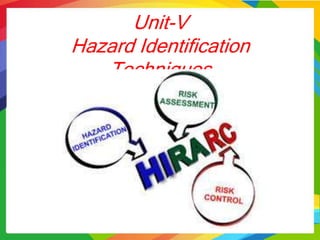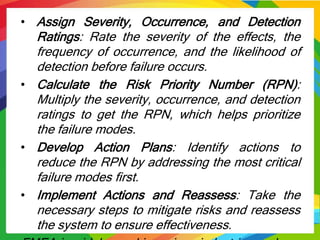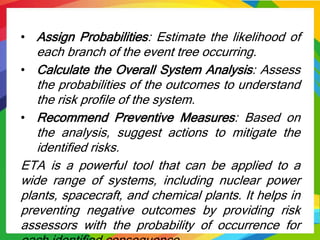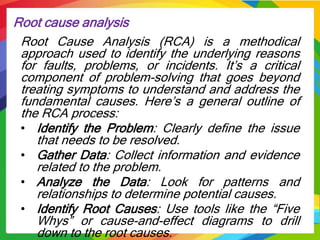The document outlines various hazard identification techniques and risk assessment methods used to enhance workplace safety, including Job Safety Analysis (JSA), Preliminary Hazard Analysis (PHA), Failure Modes and Effects Analysis (FMEA), Hazard and Operability (HAZOP), Fault Tree Analysis (FTA), Event Tree Analysis (ETA), and Root Cause Analysis (RCA). Each method serves to identify potential hazards, evaluate risks, and establish preventive measures, thereby ensuring worker safety and operational efficiency. It emphasizes the importance of maintaining a systematic approach to hazard identification and risk assessment through various analytical techniques.



















